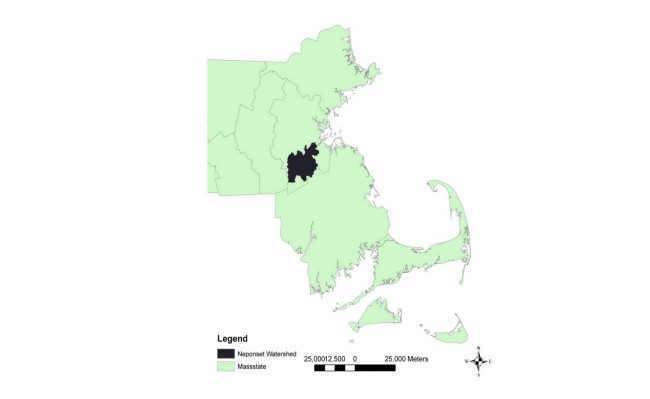- Home
- Spectralmass
- Rhessys
- Previous Research
Previous Research
Jihyun Kim , Boston University, 2015: Carbon and Water Cycles in Mixed-Forest Catchments: Ecohydrological Modeling of the influence of Climate Variability and Invasive Insect Infestation.
Yun Yang, UMass Boston, 2013: Studying Soil Moisture and Land-to-Water Carbon Export in Urbanized Coastal Areas Using Remotely Sensed Data and a Regional Hydro-Ecological Model.
Carbon and Water Cycles in Mixed-Forest Catchments: Ecohydrological Modeling of the influence of Climate Variability and Invasive Insect Infestation
Lead Investigator: Jihyun Kim, Boston University
2015
Temperate mixed forests are complex ecosystems composed of multiple vegetation types with very different physiological characteristics which are distributed over the landscape. This dissertation investigates the influence of these mixed plant landscapes on eddy-covariance flux data, and in particular, uses an eco-hydrological model to study the influence of climate variability and insect infestation on a mixed forest at the Harvard Forest Long Term Ecological Research site in Massachusetts.
There are significant seasonal and interannual variabilities in the extent and the orientation of the footprints of a flux tower (EMS-tower) as the Harvard Forest. The Gross Primary Productivity (GPP) flux was found to be largely dependent on the vegetation density during the green-up and senescence periods, but not during the mature period. Half of the interannual anomalies in the mature period GPP flux can be explained by the variation in the proportion of coniferous evergreen needleleaf forest (ENF) in the footprint. Every 1% decrease of ENF resulted in the increase of the GPP flux by 20 gCm-2.
The spatially-distributed process-based Regional Hydro-Ecological Simulation System (RHESSys) model was implemented in two headwater catchments at the Harvard Forest to simulate water and carbon cycles from 1992 to 2008. Results were evaluated using field measurements such as streamflow and the GPP and evapotranspiration (ET) fluxes at two flux towers. The simulated annual GPP flux of the deciduous forest showed strong and significant long-term increases, six times higher than the GPP flux of the coniferous forest, while the increase in ET flux of both forests was small yet significant. The Harvard Forest was infested by Hemlock Woolly Adelgid (HWA) between 2004 and 2008, and although there has not yet been a significant increase in the total annual mortality, the small stature stands have started to die off by 5.7%. The HWA infestation has already resulted in an increased streamflow in the catchment dominated by hemlock stands (44% in area). In 2014, the increased annual streamflow was estimated as 81 mm using the RHESSys model with an embedded representation of the HWA-induced loss of water conductivity (calibrated using the Hemlock tower ET flux).
Studying Soil Moisture and Land-to-Water Carbon Export in Urbanized Coastal Areas Using Remotely Sensed Data and a Regional Hydro-Ecological Model
Lead Investigator: Yun Yang, UMass Boston
2013
Dissolved organic carbon (DOC) is an important component of the global carbon cycle with variations linked to changes in terrestrial carbon storage. Soil moisture influences the decomposition rate of organic matter in the soil and the amount of available water for vegetation growth and thus DOC in the soil at the land-water boundary. When soil is saturated, lateral flow occurs and carries DOC from the soil into stream channels. This research explored the flux of DOC from a terrestrial urbanized watershed to an estuarine system with a process-based regional hydro-ecological model and remotely sensed data. A special emphasis was placed on the effects of soil moisture on the system and the utility of various remotely sensed indices of soil moisture. The study area encompassed the Neponset River Watershed, one of the main waterways flowing through Boston, Massachusetts and emptying into Boston Harbor. The Regional Hydro-Ecological Simulation System (RHESSys) was used to model the details of the Neponset Watershed biogeochemistry. Remotely sensed data and field measurements of soil moisture and estuarine DOC are then used to evaluate the modeled results.
Research area: Neponset Watershed

Professor Crystal Schaaf’s Lab
University of Massachusetts Boston
100 Morrissey Blvd.